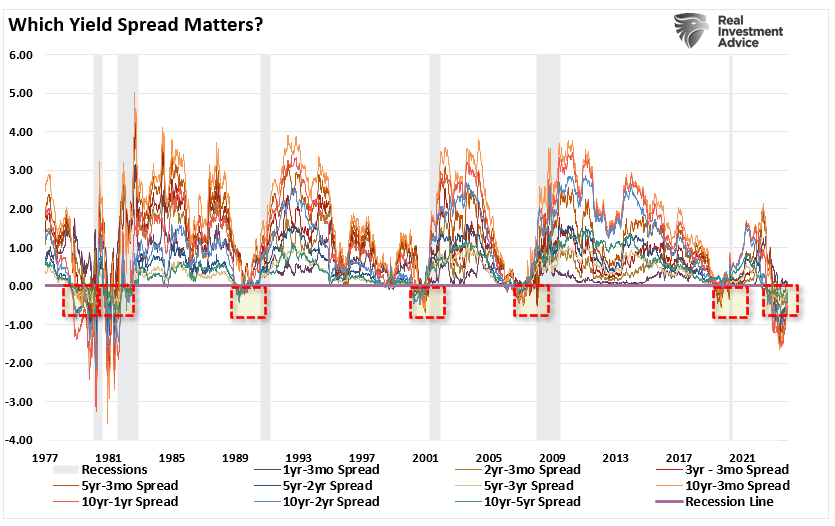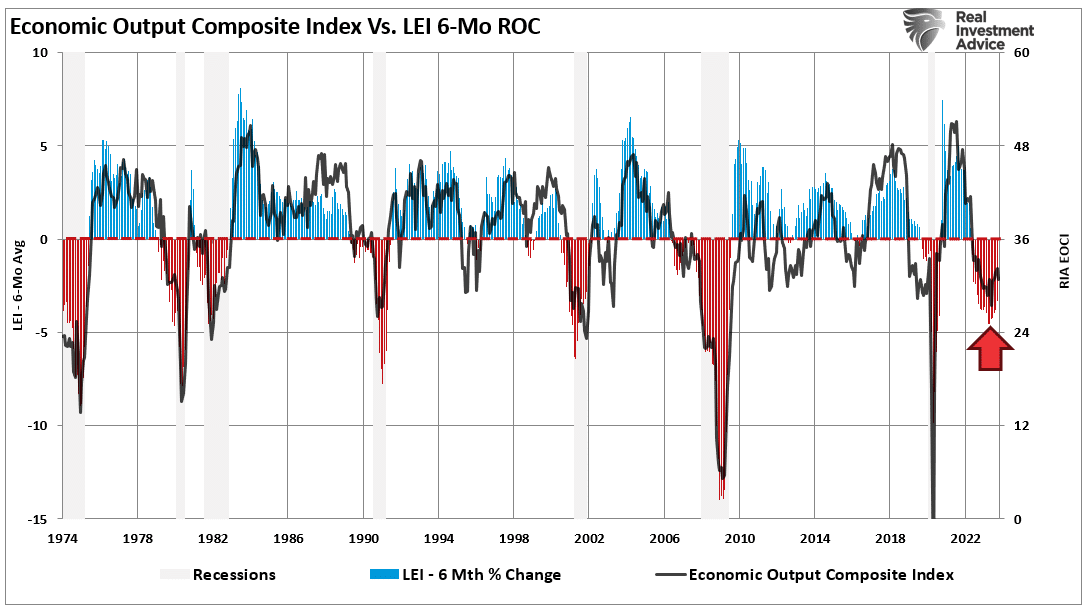Recessionary Indicators Update. Soft Landing Or Worse?
https://realinvestmentadvice.com/recessionary-indicators-update-soft-landing-or-worse/I previously discussed a slate of recessionary indicators with high correlations to recessionary onsets. However, as we head into 2024, many Wall Street economists predict a “soft landing” or “no recession” outcome for the economy. Are these recessionary indicators with near-flawless track records wrong this time? Will it be a soft landing in the economy or something worse?
We must start our recessionary indicator review with the “Godfather” of them all – “Yield Curve Inversions.”
Bonds are essential for their predictive qualities, so analysts pay enormous attention to U.S. government bonds, specifically the difference in their interest rates. As such, there is a high correlation between the yield curve’s slope and where the economy, stock, and bond markets generally head longer term. Such is because everything from volatile oil prices, trade tensions, political uncertainty, the dollar’s strength, credit risk, earnings strength, etc., reflects in the bond market and, ultimately, the yield curve.
1. Regarding yield curve inversions, the media always assumes this time is different because a recession didn’t occur immediately upon the inversion. There are two problems with this way of thinking.
2. The National Bureau Of Economic Research (NBER) is the official recession dating arbiter. They wait for data revisions by the Bureau of Economic Analysis (BEA) before announcing a recession’s official start. Therefore, the NBER is always 6-12 months late, dating the recession.
It is not the inversion of the yield curve that denotes the recession. The inversion is the “warning sign,” whereas the un-inversion marks the start of the recession, which the NBER will recognize later.
The GDP was reported at 5.2%.
https://www.foxbusiness.com/personal-finance/gdp-third-quarter-revised-upWill their be a soft landing or no recession?
Which Yield Curve Matters
Which yield curve matters mostly depends on whom you ask.
DoubleLine Capital’s Jeffrey Gundlach watches the 2-year vs. 5-year spreads. Michael Darda, the chief economist at MKM Partners, says it’s the 10-year and the 1-year spread. Others say the 3-month and 10-year yields matter most. The most-watched is the 10-year versus the 2-year spread.
While most mainstream economists focus on a specific yield curve, we track ten different economically important spreads from short-term consumption to long-term investments. Most yield spreads we monitor, shown below, are inverted, which is historically the best recessionary indicator. However, technically, the UN-inversion of the yield curve is the recessionary indicator.

The yield spread is more negative than before 2008 recession. The deepest goes back to early 1980s.
Are Leading Indicators Wrong?
We wrote “Economic Cycles Will Recover” in July after a significant drop in many leading economic indicators. To wit:
“As with market cycles, the economy cycles as well. There is little argument that the current economic data is fragile, whether you look at the Leading Economic Index (LEI) or the Institute Of Supply Management (ISM) measures. As with the market cycle, long periods of slowing economic activity will eventually bottom and turn higher. The Economic Composite Index, comprised of 100 hard and soft economic data points, clearly shows the economic cycles. I have overlaid the composite index with the 6-month rate of change of the LEI index, which has a very high correlation to economic expansions and contractions.”

As shown, the data has bottomed since July and has started to improve. Notably, these economic measures are at levels that previously marked the bottoms of economic contractions outside financial crises or economic shutdown events. As noted in July, the improvement in economic activity seen in Q3 and Q4 was expected. That improvement also supports the earnings cycle we have seen as of late.
The economic output is lower.
Soft Landing Or Recession?
The question of a “soft landing” or an outright “recession” is difficult to answer. It is certainly possible that all of the tell-tale signs of economic recession may be wrong this time. There is another possibility. Given the massive increase in activity due to a shuttered economy and massive fiscal stimulus, the reversion may take longer than expected. Both scenarios support the rising optimism of Wall Street economists in the near term. However, such also brings to mind Bob Farrell’s Rule #9:
“When all experts agree something else tends to happen.”
As noted previously, we would already be in a recession if we had entered this current period at previous growth rates below 4%. The difference is the contraction began from a peak in nominal GDP of nearly 12%. As noted above, a bounce in activity is not surprising after a significant contraction in the economic data. The question is whether that bounce is sustainable. Unfortunately, we won’t know the answer for quite some time.
Experts get it wrong.